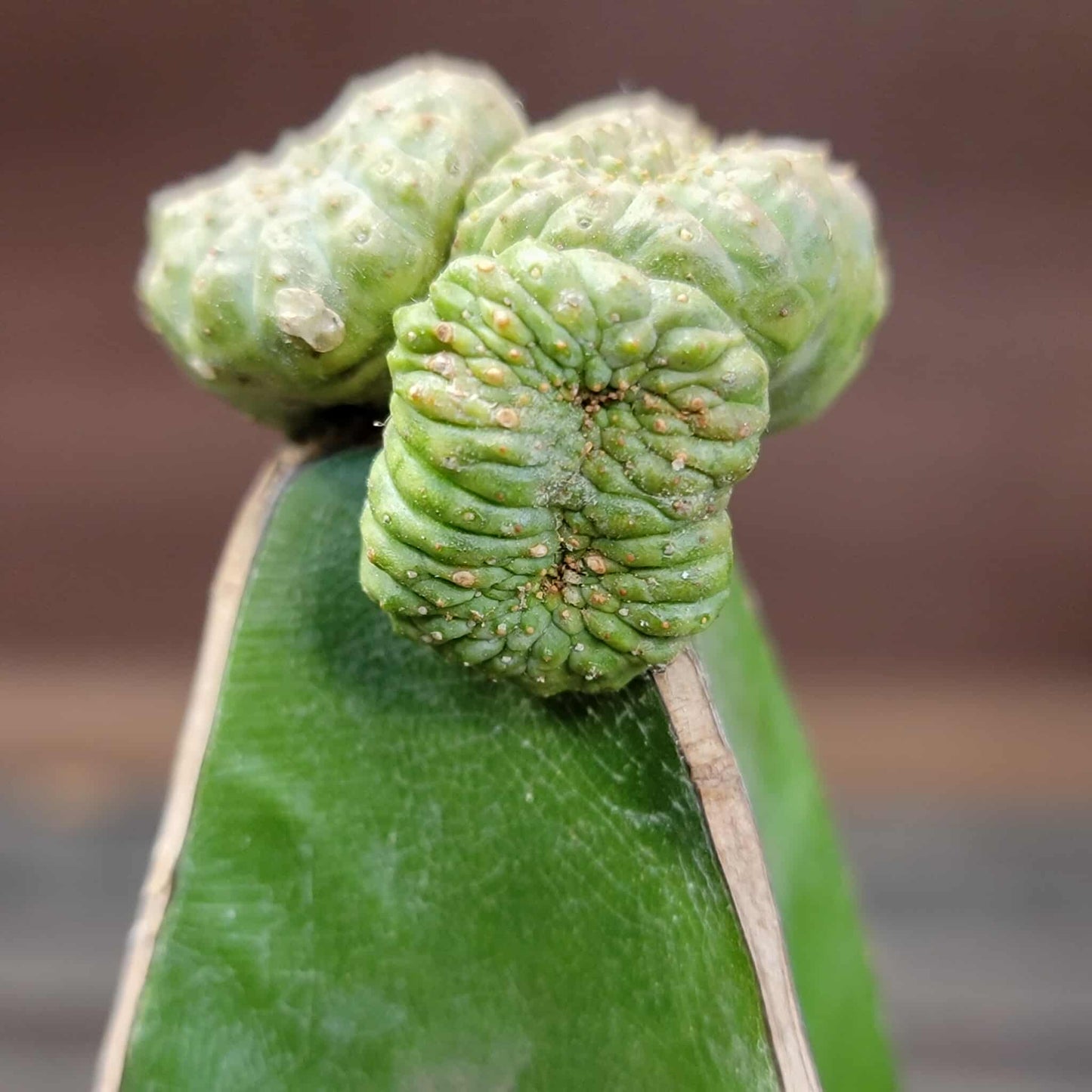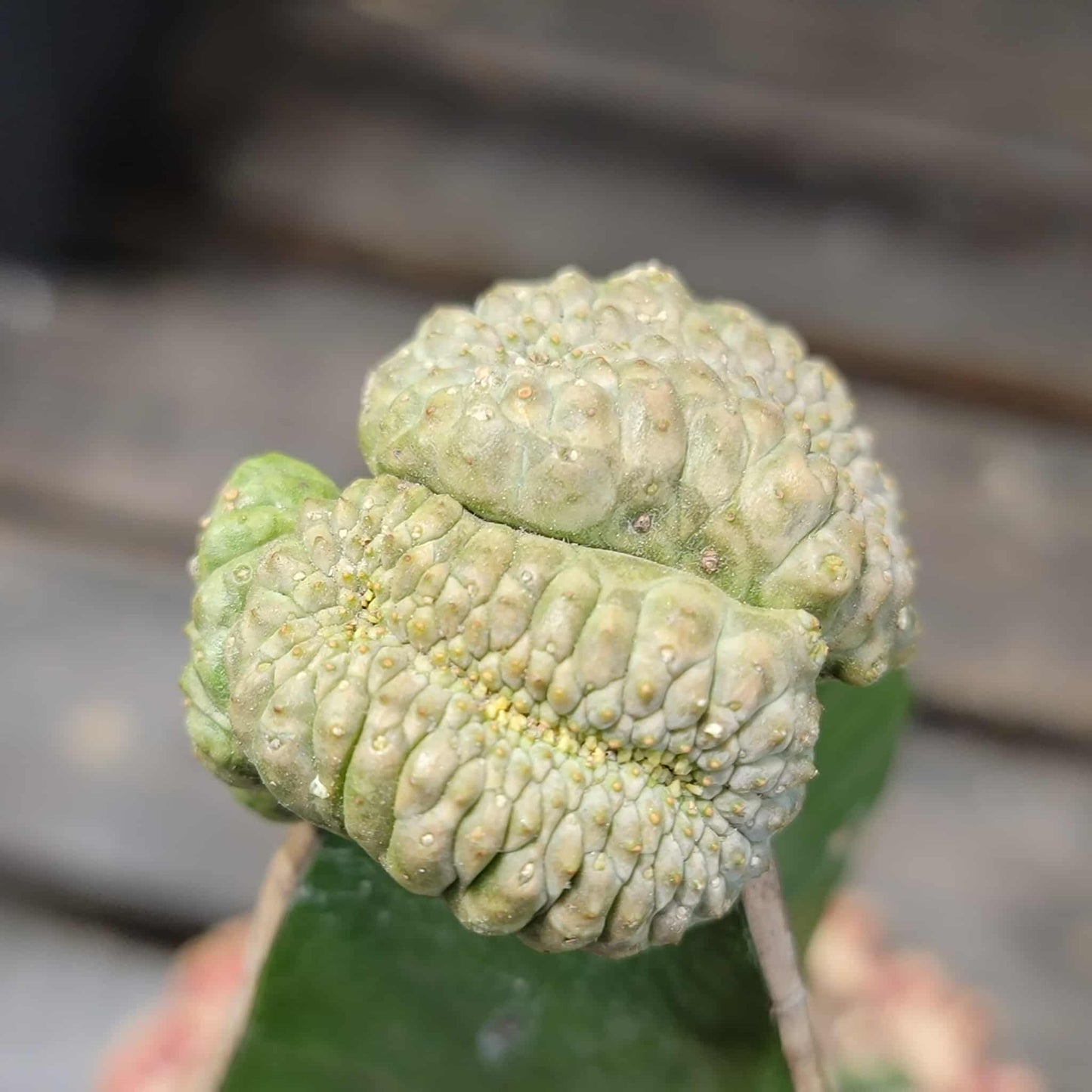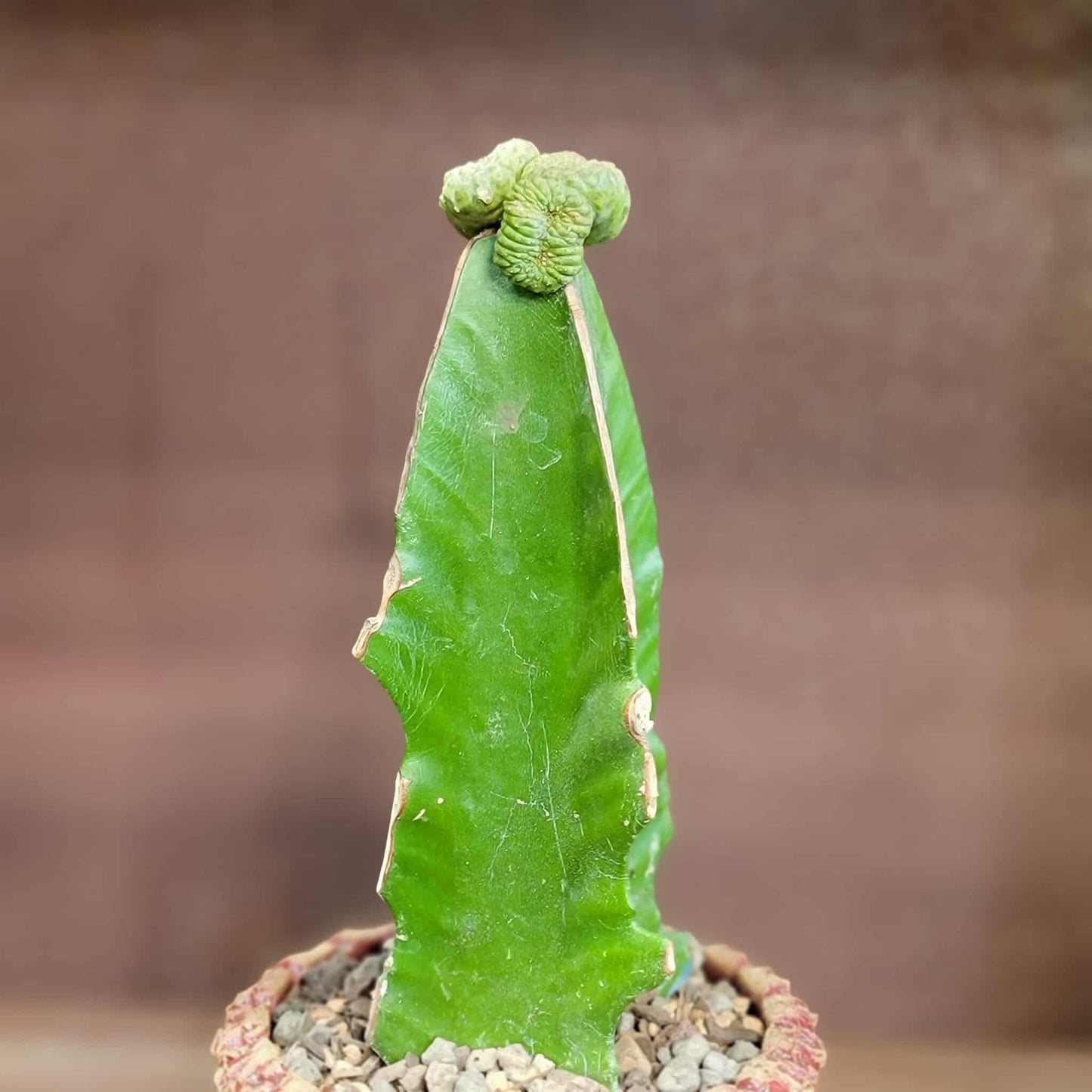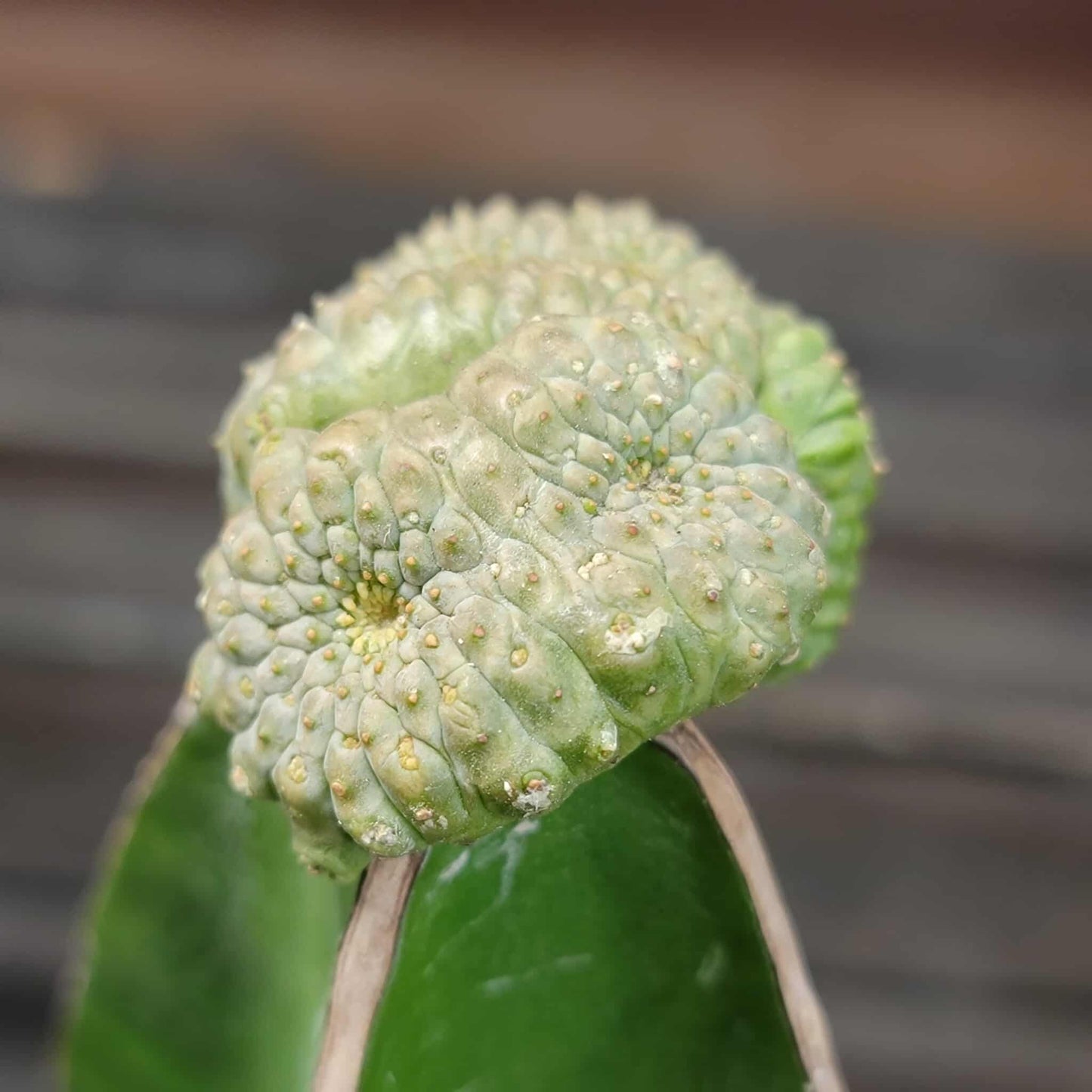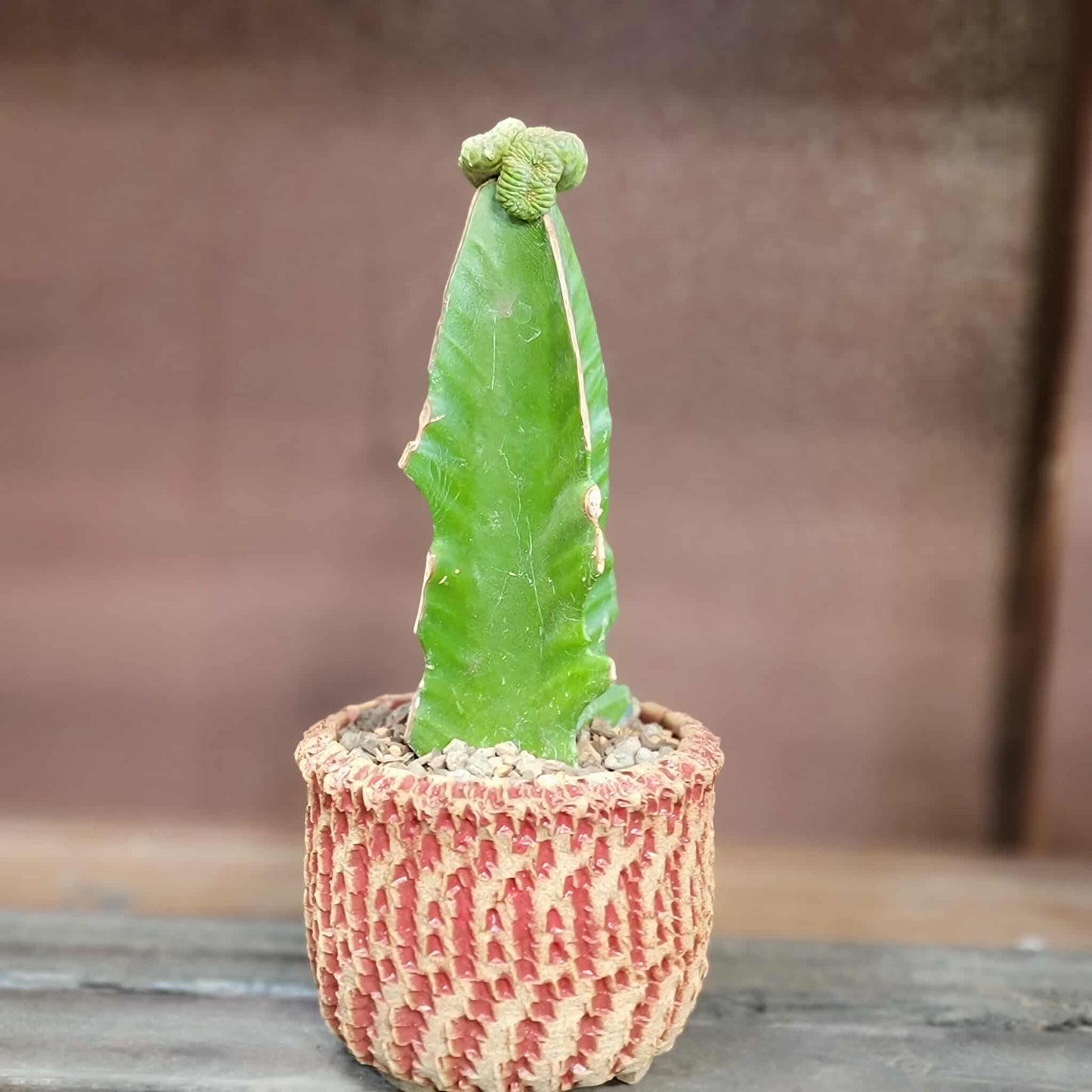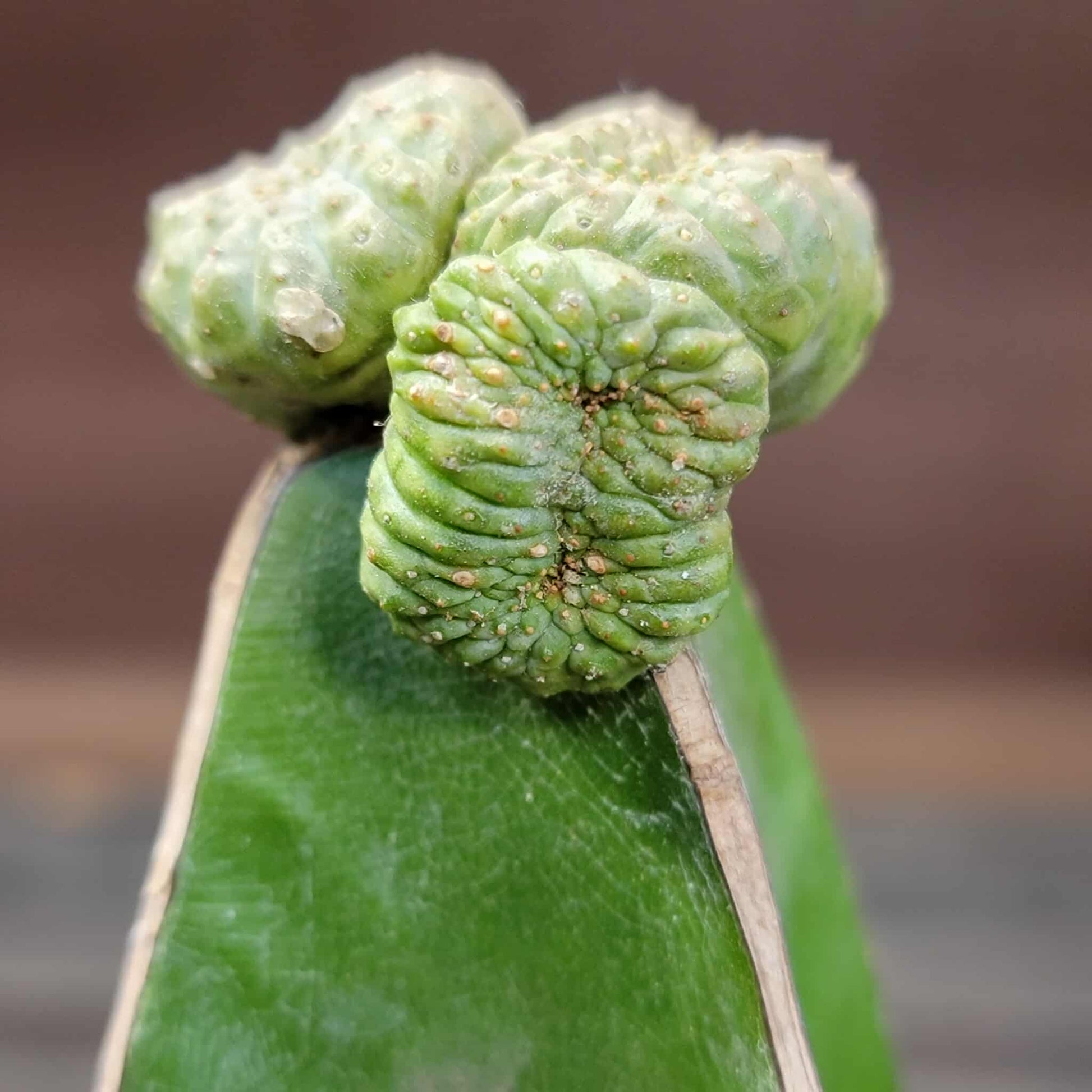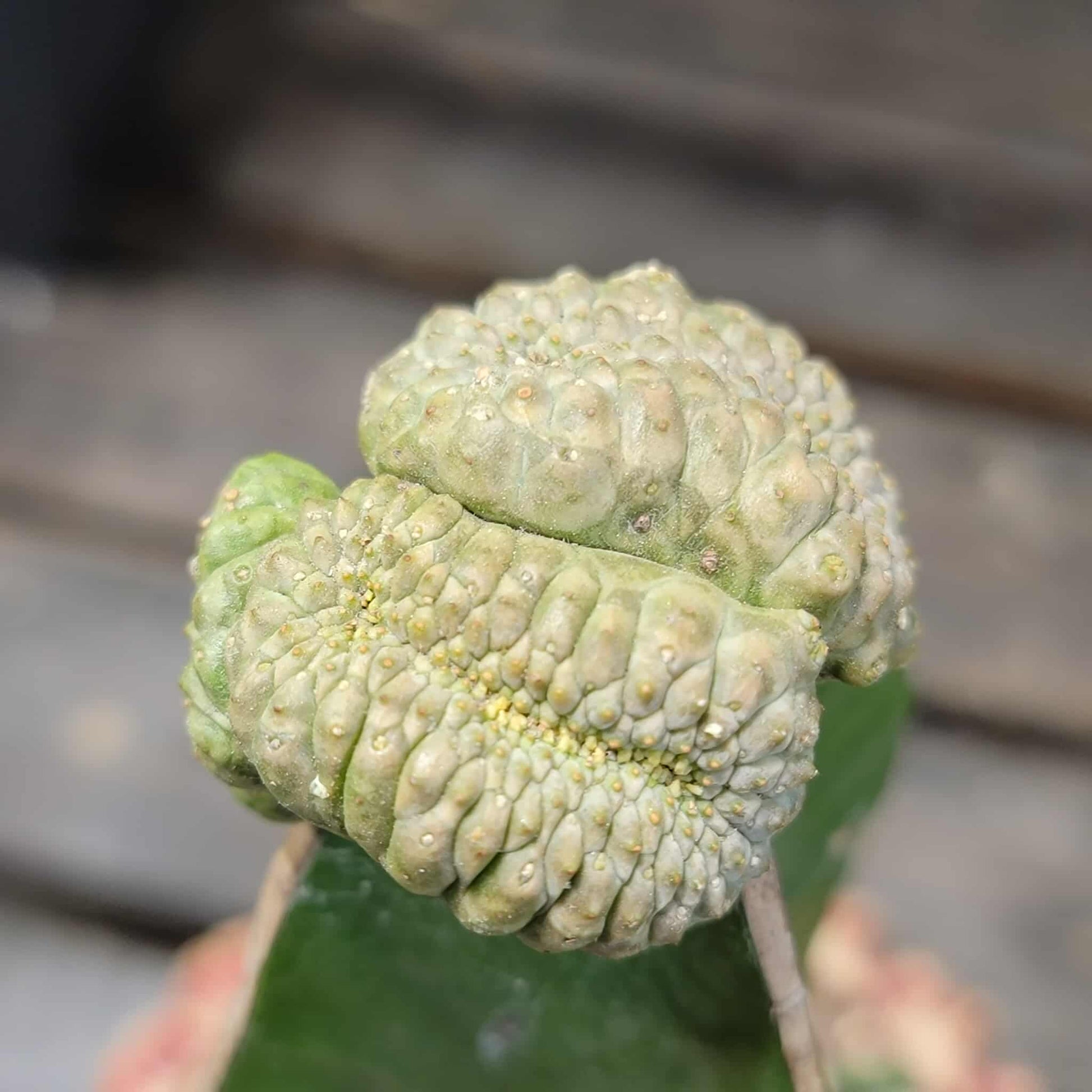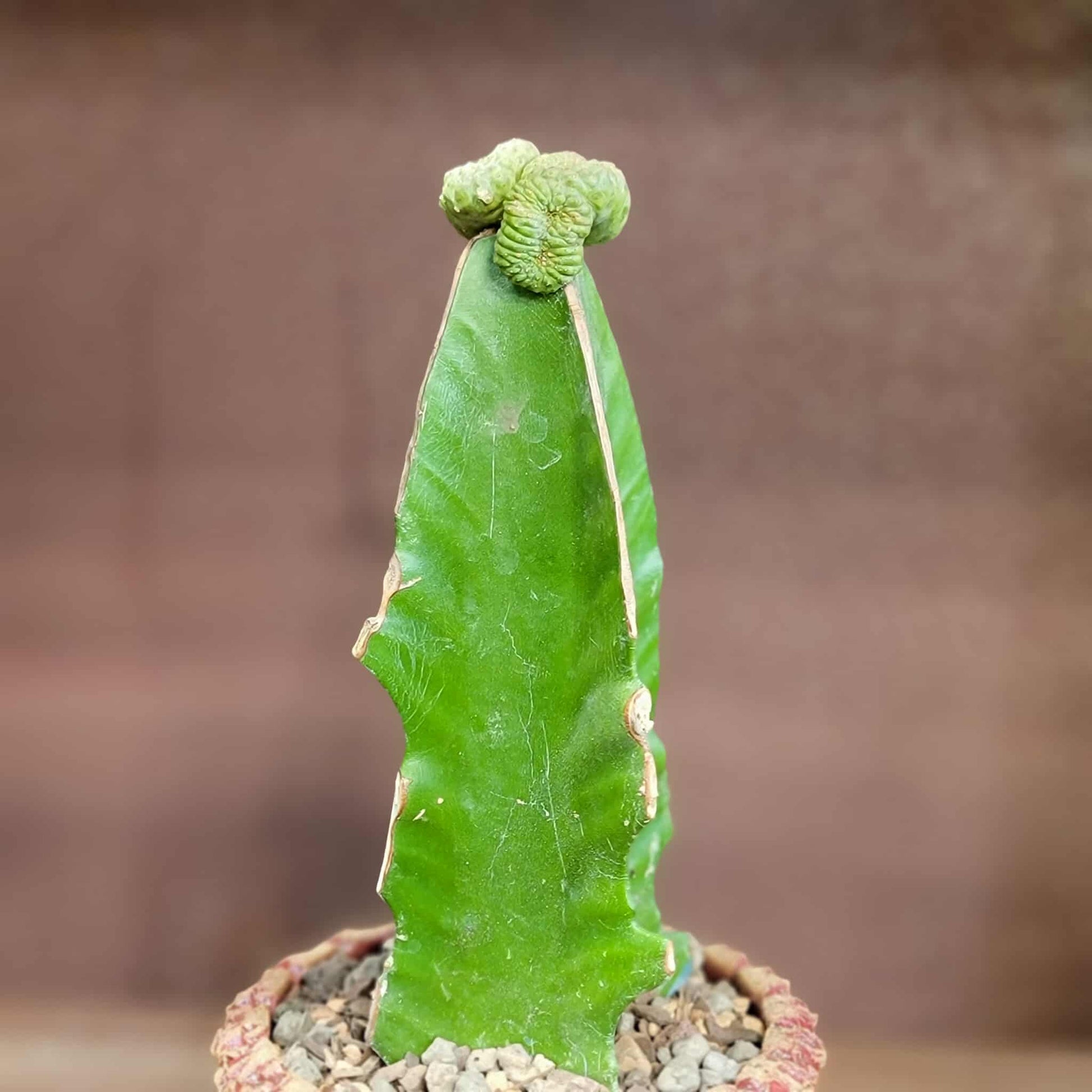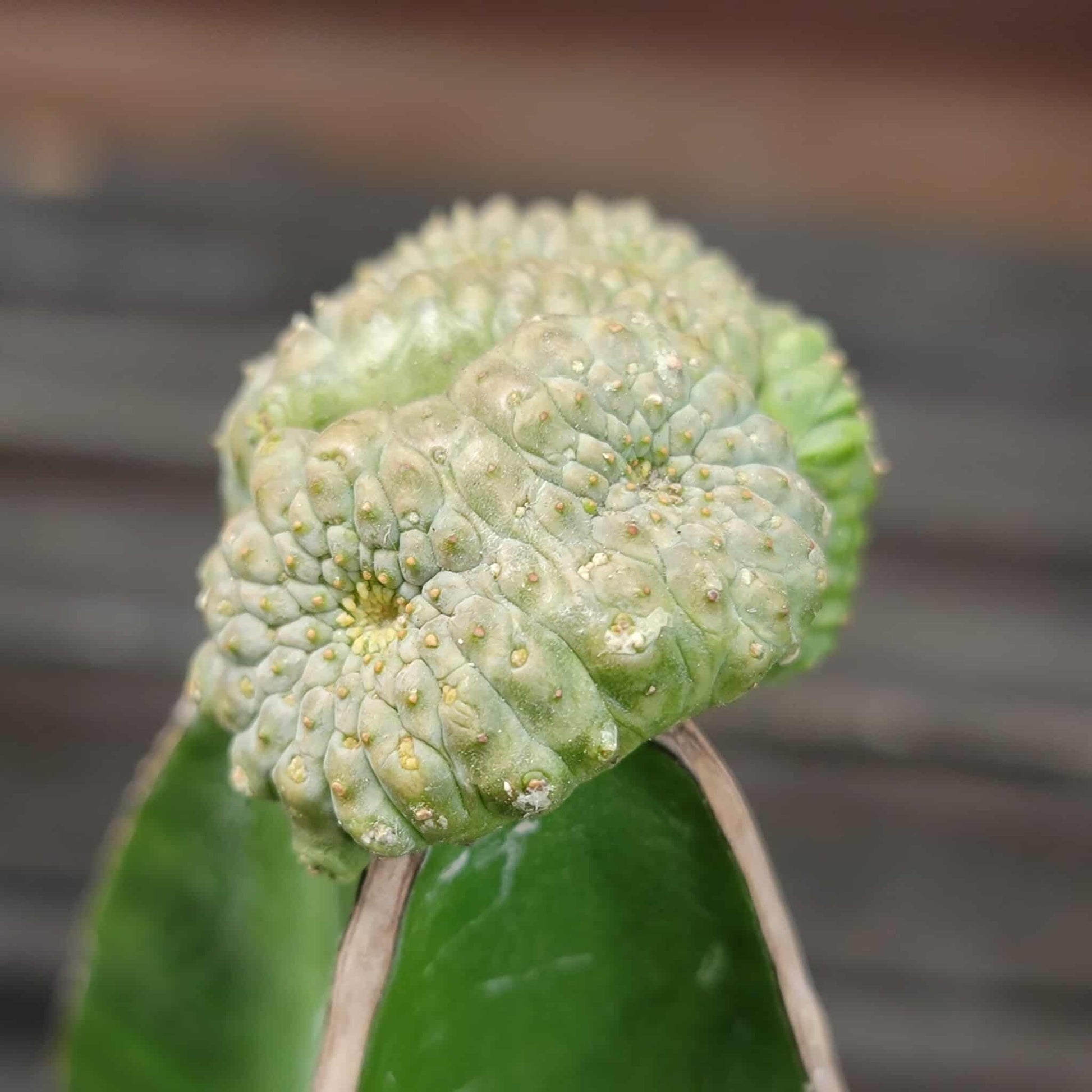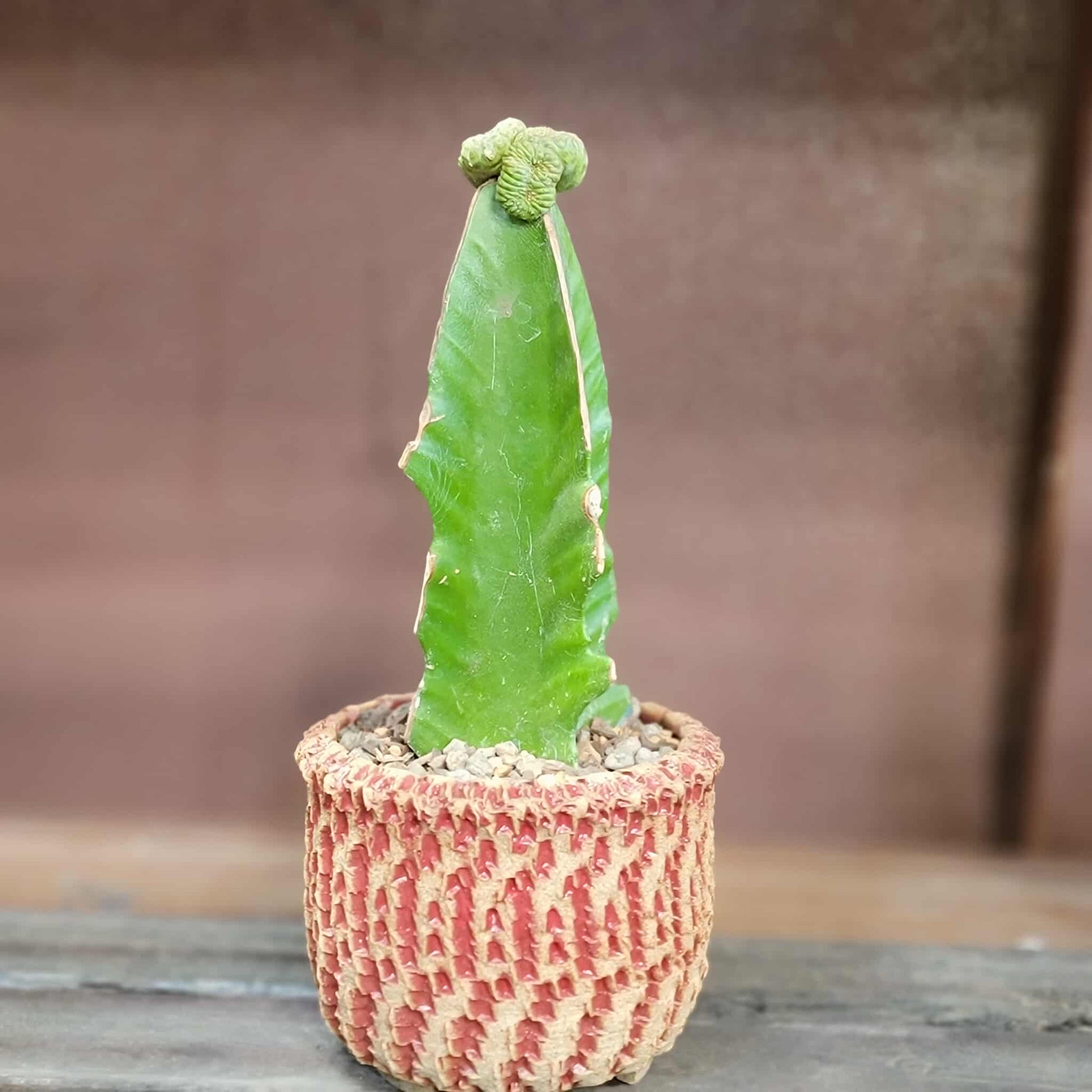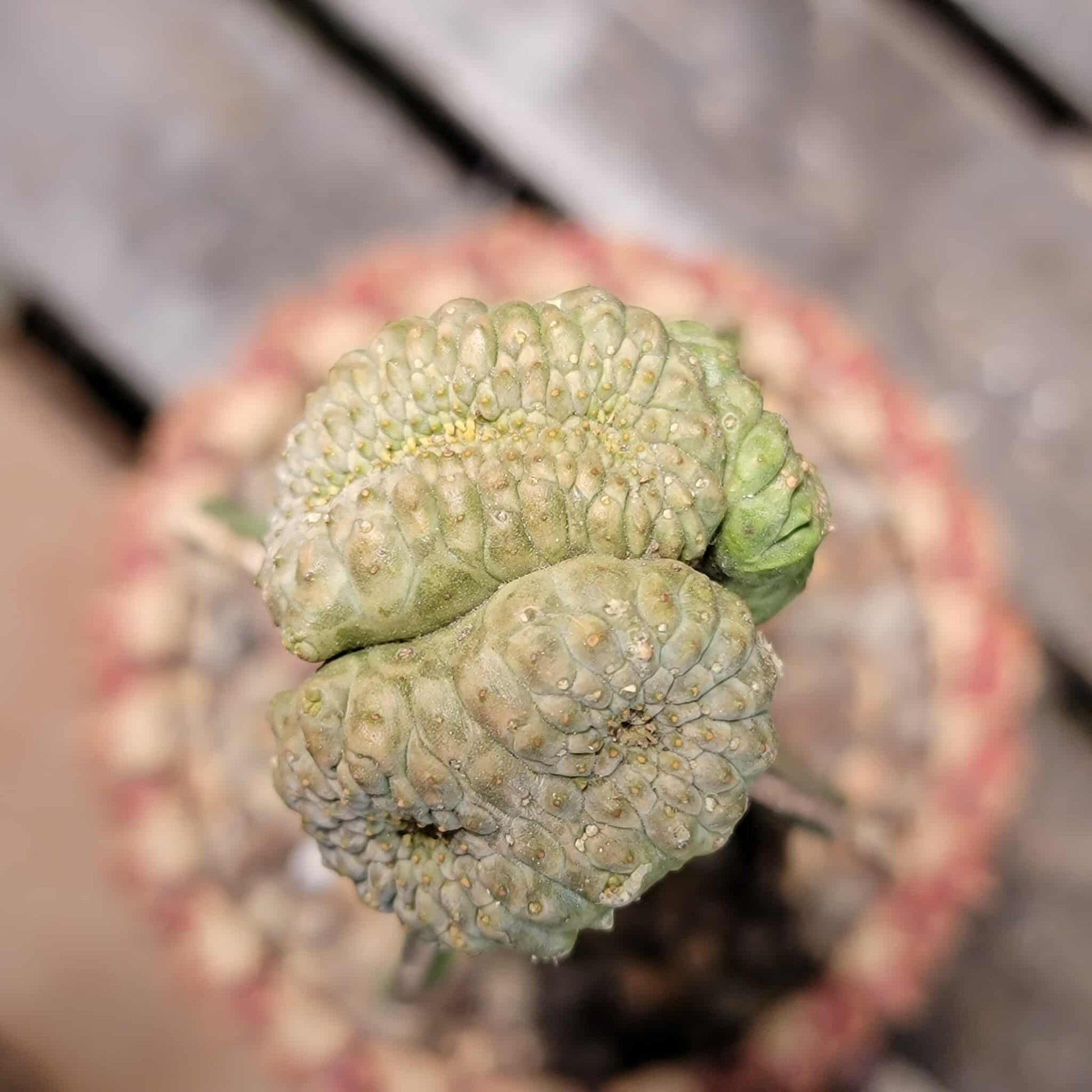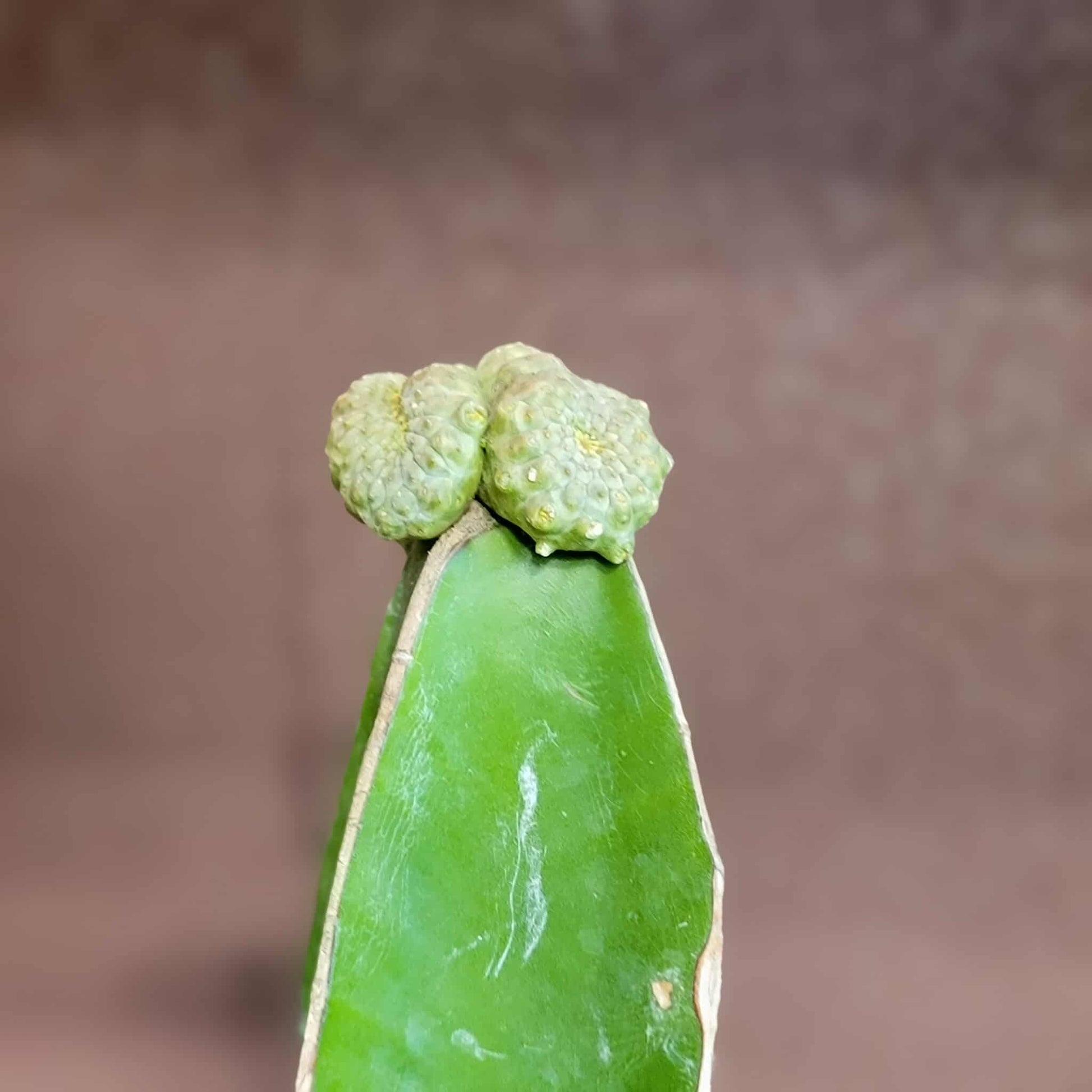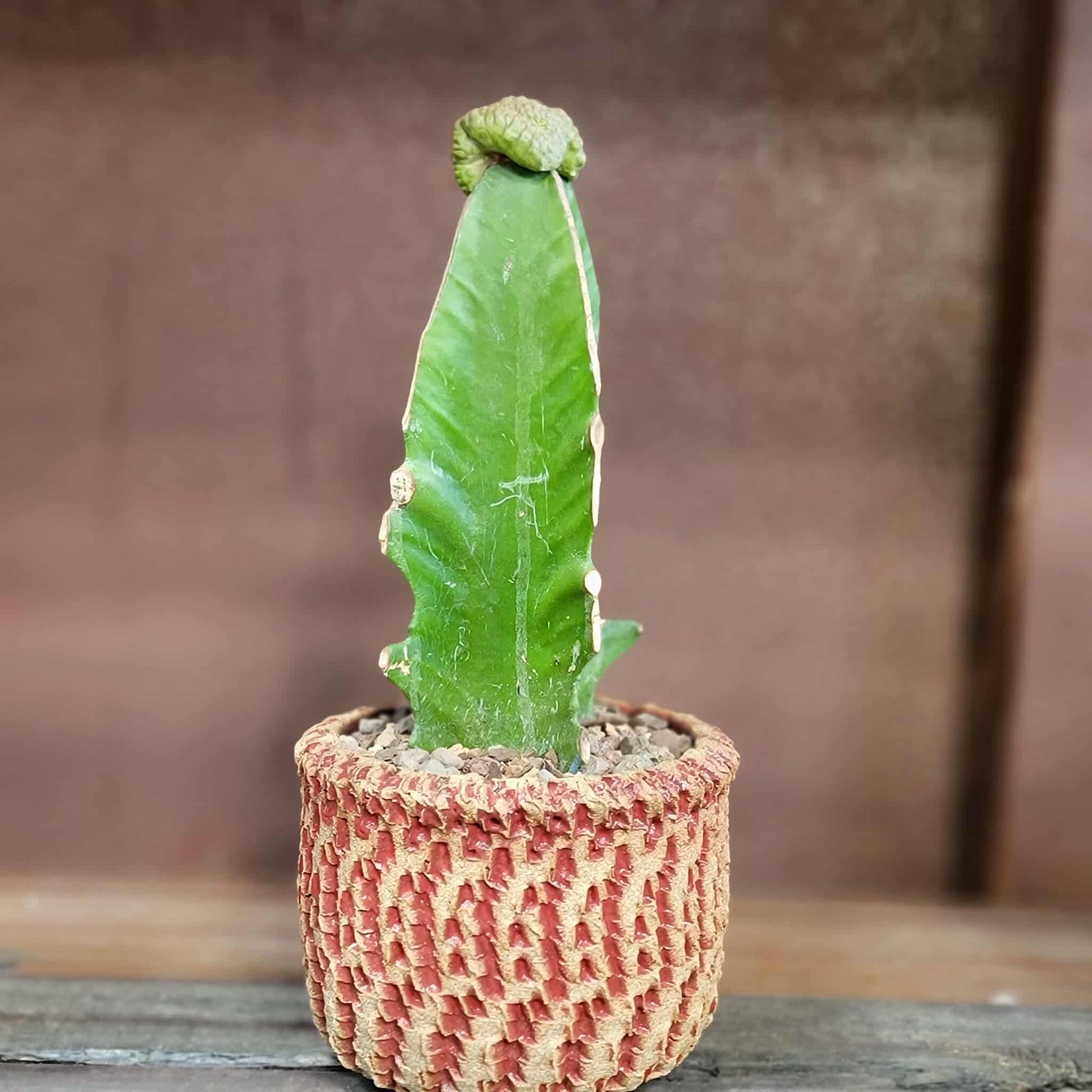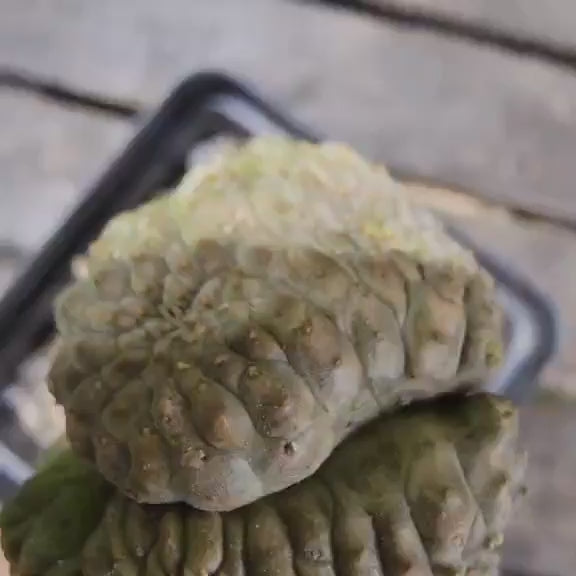Shangri-Ha Cactus Ranch
Euphorbia turbiniformis monstrosus
Euphorbia turbiniformis monstrosus
Couldn't load pickup availability
Euphorbia turbiniformis monstrosus
You will receive this exact specimen.
Scion measures 1.5” wide.
Entire specimen measures 7” tall.
Roots as shown.
Showcased here in one-of-a-kind handmade pottery (sold separately).
Will be shipped bare root.
Euphorbia turbiniformis monstrosus is a rare, slow-growing succulent known for its unique, almost spherical, and smooth stem. It's a form of Euphorbia turbiniformis, characterized by its "monstrose" or mutated growth, often lacking spines and exhibiting a lumpy, irregular shape. This cultivar is prized for its unusual appearance and is often grafted onto other Euphorbia species.
Key Characteristics:
- Shape: The "monstrosus" designation indicates a deviation from the typical turbiniformis's spherical shape, often resulting in irregular, lumpy, or bumpy growth.
- Spines: Mature specimens typically lack spines, though they may be present on very young seedlings.
- Color: The stem is usually light green with smooth, shiny epidermis, often with spherical markings.
- Growth: Very slow-growing, typically reaching a few inches in height.
- Flowers: Small yellow cyathia (flowers) appear at the apex of the stem.
- Habitat: Native to the semi-arid regions of Somalia.
- Toxicity: Like other Euphorbias, it produces a milky sap that can irritate skin and eyes, so handling should be done with care.
Care Tips:
- Light: Requires plenty of sunlight, ideally 6+ hours per day.
- Watering: Water sparingly, allowing the soil to dry out between waterings, especially during dormancy (winter).
- Soil: Well-draining soil is essential to prevent root rot.
- Temperature: Tolerates warm temperatures and prefers dry climates, avoid freezing temperatures.
- Repotting: Does not require frequent repotting.
- Propagation: Often propagated by grafting, as it can be challenging to root from cuttings.
